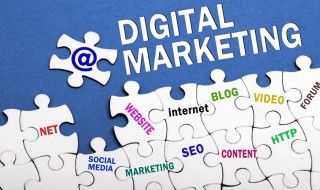
With the explosion of e-commerce retail, customers now expect the shopping experience to be cohesive and connected. In other words, if consumers have a dispute to settle, they want to receive timely and efficient customer service on the channels — phone, email, social media, live chat and more — in which they spend a majority of their time.
But the quicker your business recognizes the channels that are most optimal in providing a positive brand experience, the sooner management will see a bigger return on investment. Plus, happier customers are never a bad thing. Here are five popular omnichannel options to consider.
1. Texting
These days, anything can be done from the palm of our hands. Knowing people send upward of 100 texts per day to family and friends, why not make it yet another option for customers to reach your support team?
Indeed, give the people what they want. According to Marketing Sherpa, 27 percent of consumers ages 18 to 34 prefer to receive communication from brands via text versus a paltry 6 percent amongst those age 65 and older.
Additionally, an eWeek study concluded that 89 percent of consumers want companies to offer multiple channels in which to respond to support requests. Of that same group, more than half (52 percent) said they would prefer having a conversation via text conversation with a customer support rep.
2. Live Web Chat
Looking to save time, drive more business to your website and keep your customers satisfied? Implementing live chat support on your e-commerce site could do the trick. In fact, this feature provides the immediacy that consumers want — without having to pick up the phone and wait on hold for an eternity.
Not only does live chat provide more in the way of efficiency, it can also save your organization time, particularly if the feature employs AI to more quickly provide answers or tips. Because most customer service issues addressed via live chat can be solved in 42 seconds, these interactions often don’t need to be escalated to the phone or via email. Moreover, 63 percent of customers are likely to do business with a brand whose website offers live chat capabilities.
3. Email
The speed, efficiency and record-keeping capabilities of email no doubt allows this communication channel to remain popular throughout the business world. Plus, no matter your industry, email is bound to be a popular communication tool to connect with colleagues, customers and clients any time of the day.
In fact, 91 percent of all consumers use email every day, providing a basis for this interaction channel to be standard in your customer service offerings. From inquiries related to distribution and service downtimes to account balances and missed payments, email provides a host of opportunities to easily rectify most customer service issues.
Plus, easy-to-use, navigable interfaces via Gmail and Outlook mean most employees won’t need a rigorous onboarding session, as most employees use a similar system at home. And with tools like MailChimp, you can select from a number of email templates that can be tailored to best communicate with your audience.
4. Voice
Despite monumental tech advances in recent years, consumers still want and enjoy the ability to have a two-way conversation with support reps to rectify an issue. In fact, customer support via phone still accounts for 68 percent of all customer service interactions, according to New Voice Media.
Like email, most consumers expect the brands in which they do business with to offer phone support. For many, it’s the speed and convenience of picking up the phone and speaking with someone directly that makes this interaction channel appealing. Of course, long hold times and call transfers can be a major turnoff.
But cloud-based customer engagement platforms can eliminate some of these pain points. In fact, cloud contact center solutions, including those sold by Aspect, provide flexible options that allow businesses to more efficiently provide answers to questions and inquiries from any number of service channels.
5. Social Media
The ability to instantly connect with brands via social media not only provides you more ease and flexibility, but it also lets you hold their feet to the fire should certain companies not respond in an efficient manner. Indeed, calling out a company directly on Twitter can have massive implications on how it handles future customer service inquiries.
So who are these consumers? According to Marketing Sherpa, 18- to 34-year-olds are most likely to use social media as a customer service tool, followed by consumers ages 35 to 44. So, on which channels should your brand be providing customer service? While social media and email remain the more popular options, do some research to determine how your customers like to communicate.






